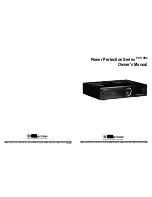
and the risk of a new fault within a short time is negligible. A typical time may be
tReclaim
= 60 or 180 s dependent on the fault level and circuit breaker duty cycle.
tSync
: Maximum wait time for fulfilled synchrocheck conditions. The time window
should be coordinated with the operate time and other settings of the synchrocheck
function. Attention should also be paid to the possibility of a power swing when
reclosing after a line fault. Too short a time may prevent a potentially successful
auto reclosing.
tCBClosedMin
: A typical setting is 5.0 s. If the circuit breaker has not been closed
for at least this minimum time, an auto reclosing start will not be accepted.
tSuccessful
: If the circuit breaker closing command is given and the circuit breaker
is closed within the set time interval
tUnsucCl
, the
SUCCL
output is activated after
the set time interval
tSuccessful
.
tUnsucCl
: The reclaim timer,
tReclaim
, is started each time a circuit breaker
closing command is given. If no start occurs within this time, the auto recloser will
reset. A new start received in “reclaim time” status will reenter the auto recloser to
“in progress” status as long as the final shot is not reached. The auto recloser will
reset and enter “inactive” status if a new start is given during the final reclaim time.
This will also happen if the circuit breaker has not closed within set time interval
tUnsucCl
at the end of the reclaim time. This latter case is controlled by setting
UnsucClByCBChk
. The auto reclosing sequence is considered unsuccessful for
both above cases and the
UNSUCCL
output is activated.
DeadTime settings
NoOfShots
: In power transmission one shot is mostly used. In most cases one auto
reclosing shot is sufficient as the majority of arcing faults will cease after the first
auto reclosing shot. In power systems with many other types of faults caused by
other phenomena, for example wind, a greater number of auto reclosing attempts
(shots) can be motivated.
t1 1Ph, t1 2Ph, t1 3Ph
: There are separate settings for the first shot for single-, two-
and three-phase auto reclosing dead times.
Single-phase auto reclosing dead time: A typical setting is
t1 1Ph
= 800ms. Due to
the influence of energized phases the arc extinction may not be instantaneous. In
long lines with high voltage the use of shunt reactors in the form of a star with a
neutral reactor improves the arc extinction.
Three-phase auto reclosing dead time: Different local phenomena, such as
moisture, salt, pollution, can influence the required dead time. Some users apply
Delayed Auto Reclosing (DAR) with delays of 10s or more.
Extended t1
: The time extension below is controlled by the
Extended t1
setting.
tExtended t1
: A time extension delay,
tExtended t1
, can be added to the dead time
delay for the first shot. It is intended to come into use if the communication
channel for permissive line protection is lost. The communication link in a
Section 12
1MRK 505 393-UEN B
Control
250
Line differential protection RED650 2.2 IEC
Application manual
Summary of Contents for RED650
Page 1: ...RELION 650 SERIES Line differential protection RED650 Version 2 2 Application manual ...
Page 2: ......
Page 22: ...16 ...
Page 32: ...26 ...
Page 82: ...76 ...
Page 112: ...106 ...
Page 152: ...146 ...
Page 208: ...202 ...
Page 214: ...208 ...
Page 282: ...276 ...
Page 356: ...350 ...
Page 404: ...398 ...
Page 408: ...402 ...
Page 442: ...436 ...
Page 452: ...446 ...
Page 453: ...447 ...











































